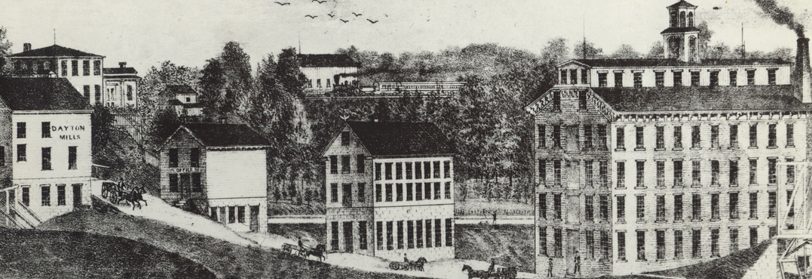The word “fardowner” appeared in America at least as early as the 1830s, and referred to people from Ireland who came to obtain work on the new systems of canals and railways. The Corkonians came from County Cork in southern Ireland, while the Fardowners were from central Ireland. Rival clans competed with each other for jobs on the canals and there were frequent outbreaks of violence. One such outbreak among the workers on the Illinois-Michigan canal in 1838 is told of by Jesse Green in his memoir:
The season of 1838 we had what Mr. Baldwin in his history of the county terms “The Irish rebellion,” the Corconians being in the majority on the canal, the rivalry between that class and the Far-downs, culminated in the attempt of the Corconians to drive all Far-downs off the canal.
The sheriff Alson Woodruff called out all the available men he could get to thwart their purpose, he sent up to Dayton where we had on the upper and lower works something over one hundred men, all Far-downs, working on the feeder. The contractors on both works were absent that day and no one was left except myself and Cousin John Stadden who was willing to marshall and lead our men to the scene of expected battle. We were the only Americans in the squad, so we marched our men down the tow-path unarmed expecting to meet the sheriff in Ottawa, but he had preceded us down the Canal, and we continued our march down the tow-path, and met the Corconians coming up at the upper end of Buffalo Rock, armed with all manner of death dealing weapons, guns, pistols, scythes, shovels and picks &c. As soon as our men saw their opponents marching up the canal in such formidable array, they all broke ranks and ran up the North bluff like a herd of wild swine, leaving Stadden and myself alone there, and though a serious matter we almost burst with laughter to see the stampede. Doubtless it proved to be a very lucky circumstance, had they stood their ground and met the Corconians unarmed, we should probably have had a bloody battle and our men would have fared badly.
The Corconians continued their march up the canal to Ottawa when the sheriff with his posse of armed men halted them just west of town and read to them the riot act, and demanded that they lay down their arms and disperse, which most of them did but some attempted to run with their arms (not a gun was fired up to this time) in Mr. Baldwin’s history he says “it was claimed by some that fourteen or fifteen were killed.” We were ordered by the sheriff to pursue the fugitives on horseback and disarm them, which seemed to imply that if they ran too fast they were justified in retarding their speed, but I only heard of one instance of this kind, one bragadocia whom I will not name bragged that he stopped his man “rather suddenly” in the high grass fronting Judge Catons residence. I pursued one man and overtook him on the bank of the river just east of the present water works plant. I could not see that he had any arms, but told him he had a pistol which he must surrender, but he stoutly denied having any kind of weapon, until I told him my orders were to shoot if obliged to; and drew down my gun and cocked it as in the act of shooting, he then said he had a pistol but it was a borrowed one and he was afraid if he gave it up he never would find it again; I assured him that all arms and weapons taken would be left in charge of the sheriff and be returned to owners as soon as the difficulty was settled, he then handed the pistol to me.
On our return home that night we found our men had all returned home safely, and “Begore lucky it was fur us that we did run, faith had we stood our ground, ivery mithers son ivus would have been kilt.” The work proceeded without much trouble on this score, but it was desirable and almost a necessity on the part of contractors to not mix the two clans on the same work.

